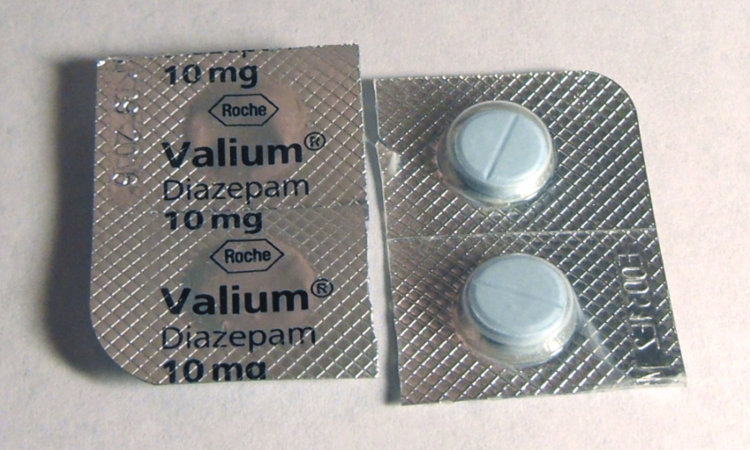
Valium Withdrawals – Valium (diazepam) is a benzodiazepine, belonging to a class of medication that is most commonly used to relieve anxiety, as well as insomnia and occasional seizures.
Any person who has used Valium for more than four months may experience withdrawal symptoms when they try to quit or drastically cut back. As Valium accumulates, the body reduces its own production of anxiety-relieving chemicals.
People who use Valium for a prolonged period or in high doses may experience more intense withdrawal symptoms after discontinuing drug use. These effects occur because, over time, the body grows accustomed to the drug’s presence and becomes unable to function normally without it – this condition is known as dependence.
Once physical dependence has developed, the user needs Valium to function and forestall symptoms of withdrawal. Valium users sometimes increase their doses to avoid withdrawal symptoms as tolerance to the drug increases.
In some cases, withdrawal from Valium can be life-threatening, so users should never try to quit abruptly (“cold turkey.”) Moreover, discontinuing Valium requires medical supervision as the body and brain strive to reestablish balance and become once again able to function properly without the drug.
Symptoms of Valium Withdrawals
The intensity of withdrawal symptoms largely depends on the duration of time in which the Valium was used and the average amount used on a daily basis. Withdrawal from Valium can be unpleasant and sometimes intense, but the symptoms are often less severe than more powerful benzos such as Xanax.
Common symptoms of Valium withdrawal include the following:
- Abdominal cramps
- Headache
- Tremors or seizures
- Sweating
- Muscle pain
- Nausea and vomiting
- Severe anxiety and/or confusion
- Restlessness and insomnia
- Hallucinations
According to the Diagnostic and Statistical Manual of Mental Disorders, the use of just 15 mg of Valium per day for several months will cause the user to experience withdrawal symptoms upon cessation. People who have used more than 100 mg of Valium per day are more likely to experience severe withdrawal symptoms and complications when they try to cut back on use.
Duration of Valium Withdrawals
Because Valium is a long-acting benzodiazepine, withdrawals last longer than that of most other drugs in its class. And due to its long-lasting effects, in some cases, the first symptoms of withdrawal may not occur for up to one week for those who Valium heavily.
One study from 1982 measured the withdrawal symptoms of 10 patients who had misused Valium from 3-14 years. Over the previous six months, their use of Valium had ranged from 60-120 mg daily, and they reported using no other drugs. The results were as follows:
“The withdrawal period lasted about six weeks. The intensity of the symptoms and signs was high initially, fell during the first two weeks, then rose again in the third week, before finally declining.”
Valium Withdrawals Timeline
First 1-2 Days
The first signs of Valium withdrawals might be experienced within two days of discontinuing use. Symptoms of anxiety and restlessness begin mildly but increase in severity over time.
Week 2
The symptoms of Valium withdrawals often peak in the second week after cessation. The worst symptoms of withdrawal usually start taking effect during this time and may include insomnia, nausea, sweating, and muscle pain.
Weeks 3-4
Valium withdrawal may persist for up to a month after discontinuing use. The intensity of withdrawal symptoms subside during this time and become more manageable.
Valium Detox
To detox means to clear the body of a substance while mitigating the withdrawal symptoms that will crop up once the substance is no longer being used. To detox from Valium without professional medical supervision can be dangerous, so it’s a great idea to enter a medically-supervised detox program.
Throughout a Valium detox, the dosages of Valium will be periodically reduced – usually every week – until the drug is entirely out of one’s body. Detoxing slowly can prevent dangerous withdrawal symptoms such as seizures from occurring.
Most researchers of Valium addiction recommend a fixed discontinuation schedule for detox lasting from 4 to 8 weeks. The length of time it will take for a full detox varies depending on how severe the physical dependency is assessed to be. The worse an addiction is, the more likely one is to experience highly unpleasant and possibly life-threatening withdrawal symptoms.
Treatment for Valium Withdrawals and Addiction
After or during a tapering period, people who have abused or become addicted to Valium are encouraged to participate in a long-term, comprehensive drug treatment program. Integrated treatment can be administered on an inpatient or outpatient basis, but always includes psychotherapy, counseling, education, and group support.
Our center provides individualized treatment delivered by caring professional staff who specialize in addiction and mental health. We give clients the tools and support they need to be successful in recovery and sustain long-lasting wellness and harmony.
Contact us today to find out how we can help you on your journey to recovery!